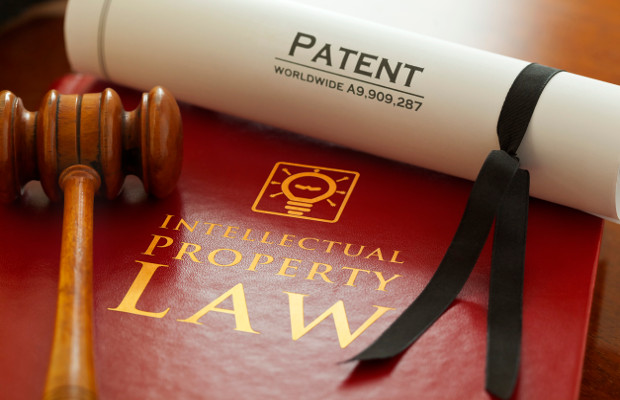In 2021, the Chinese president Xi Jinping claimed that Chinese Intellectual Property systems will be going through a series of renovations, which aims at improving its IP systems. On that note, this will lead to changes in the field of Design protection. The revised Chinese new patent law 2021 starts taking effect in June 1, 2021.

Partial design application made possible
Article 2.4 of the Chinese Patent Law’s amendment: “Appearance design refers to a new design that is aesthetically pleasing and suitable for industrial applications based on the overall or partial shape, pattern, or combination of the product, and the combination of color, shape, and pattern.” (The National Law Review, translated)
For a long time (last revision was in 2008), patentable designs have to be a whole industrial product. The new revised Chinese Patent Law now liberalized the protection of partial designs, which allows the application of novel designs, in which they may be a small part of the whole production, or it can even be the invisible part of the product. This opens up a huge chance of design applications in China. After the revised Law take effect, China IP Office shall witness a boom in novel design applications, though the applications’ novelty might be pretty much questionable.
Since this amendment may allow the application for invisible part of a product, this could mean that the broken lines in the drawings can be acceptable. Yet, this is a problem that has not been issued through specific rules.
The changes will undoubtedly enhance the protection of industrial designs greatly.
The domestic priority establishment
The only priority establishment currently in the Chinese Patent Law is the foreign priority. If a foreign application get a hold of the priority, any unpublished design applications shall be withdrawn or abandoned; the latter applications will be in risk of invalidation; any previously patented designs shall become a prior art.
Article 29.2 of the new Patent Law is amended to read: “Within twelve months from the date of filing the first patent application for invention or utility model in China, or within six months from the date of filing the first patent application for a design in China, the applicant shall apply to the Patent Administration Department of the State Council Those who file a patent application on the same subject may enjoy priority.”
This change shall recognize the domestic priority of industrial design. This means the applicant may file a design application as soon as his/her design is developed, without any worry of modifications or similar designs launched for later products. The applicant may file another design application(s) should he/she makes minor modifications or develops more similar designs within six months. By this change, the domestic priority can be a supplement for the sake of domestic protection in a periodic manner.
Protection period: 15 years
The heading is pretty much self-explanatory at this change. Yes, the protection period of industrial design applications in China will be 5 years longer. This amendment is in Article 42: “The term of invention patent right is 20 years, the term of utility model patent right is 10 years, and the term of design patent right is 15 years, all counted from the date of filing.”
This 5-year-change may also cause many applicants to reconsider their tactic of filing applications. After all, 5 years is not a short period of time.
Grace period without loss of novelty
As an amendment in the Article 24:
“Article 24. The invention-creation for which a patent is applied for shall not lose its novelty in any of the following circumstances within six months before the filing date:
( 1) It is made public for the first time for the purpose of public interest when a state of emergency or an extraordinary situation occurs in the country;”
This change covers the force majeure risk of losing novelty. If a national emergency or extraordinary state of affairs occurs within six months before the filing date, the applicant may submit relevant evidences to avoid losing the novelty of his application. This move’s motivation is most likely because of the complex situation of Covid-19 epidemic, or a more recent incident of Evergreen.
Chinese new patent law 2021: Open Licensing
With many changes oriented to the matter, China seems to have a really changed view point. In the revised patent law, they added 3 new articles for the matter. Article 50 regulates open licensing of the applicant; whereas Article 51 regulates open licensing of the implementing parties; and Article 52 regulates related disputes.
Open licensing to the applicant
The Chinese new patent law 2021 even adds a whole new dedicated article 50 for opening license from the applicant perspective:
“Where the patentee voluntarily declares in writing to the Patent Administration Department of the State Council that he is willing to license any entity or individual to exploit his patent, and specifies the method and standard for payment of license fees, the Patent Administration Department of the State Council shall make an Announcement and implement open licensing.”
Through legal procedures, applicant are able to open the application’s license. Thus makes it available to many parties to apply or modify the application, with the acknowledgement of the original application.
This open licensing system is a fundamental legal systems. It promotes the implementation of the patent transformation. Should this be the case, it will greatly enhance the patent’s value, as many parties will be able to implement and modify the patent. However, the problem between supply and demand is another concern. The authorities should also consider the way to govern the balance between the 2 ends.
Open licensing to the implementing parties and dispute
Accordingly to the Article 51 and 52, implementing parties should include acknowledgement to the art they referenced from. Of course, open licensing does not make a patent free for usage, the patent shall be available only after a mutual agreement between 2 parties. Furthermore, the license that granted to implementing party does not mean that party has the exclusive license of the patent.
Should there is any dispute over the implementation, both parties are advised to resolve using negotiation. If the negotiation does not work out, they might file a lawsuit.
Accused infringers may also submit an evaluation report of patent
In Chinese new patent law 2021, this change is an amendment in the new Article 66 (renumbered from Article 61): “the people’s court or the administration department for patent-related work may require the patentee or the interested parties to present a patent right assessment report prepared by the patent administration department under the State Council through searching, analyzing, and assessing the relevant utility model or design, which shall serve as evidence for trying or handling the patent infringement dispute; special patent rights holder or interested party or the accused infringer can also take the initiative to request a patent evaluation report .”
That accused infringers may initiatively submit the evaluation report is a move that provides advantages for this party. This is especially effective when the accused infringers find out about a prior design that may invalidate the patent.
Infringement compensation and burden of proof
The Chinese new patent law 2021 also features a new punitive compensation system. This system is exclusively for the infringement of the international patent rights. Depending on the seriousness of the situations, the people’s court may calculate the amount based on the loss suffered by the patent owner, the benefit obtained by the infringer, or the multiple of the patent license fee, and finally determine the compensation within 5 times of the above amount.
On the same note, there is an increase in the statutory compensation. Currently, the statutory compensation lay between 10.000 yuan to 1 million yuan; the revised patent law sets the bar to 50.000 yuan to 3 million yuan.
In terms of evidence rules, in a case when the right holder is unable to provide sufficient evidences despite its best effort because the account books and materials related to the infringement are in the hands of the infringer and not possible to reach; the people’s court can order the infringer to provide it, thereby reducing the burden of proof on the patent owner.
This three point are in the Article 71 of the Chinese new patent law 2021. These regulations also apply for the industrial design.
The statute of limitations for infringement changes to three years
This is an amendment in the Article 74 of the new patent law. Previously, this period only lasts for two years. The change is self-explanatory, and one year extension does open up more change for the applicants.
Chinese new Patent law 2021: Change for the better?
Other than industrial design, the Chinese new IP Law overall seems to stay true to President Xi Jinping’s claim. The revision of the law will have a great impact on the applicants’ strategy to obtain a favorable protection. With only one month away from its deployment, this revision is still pending for implementations and clarifications. This revision brings the Chinese IP law closer to the global regulations, which will be favorable to not only domestic but also foreign applicants.
Please find the list of China IP Firms here

